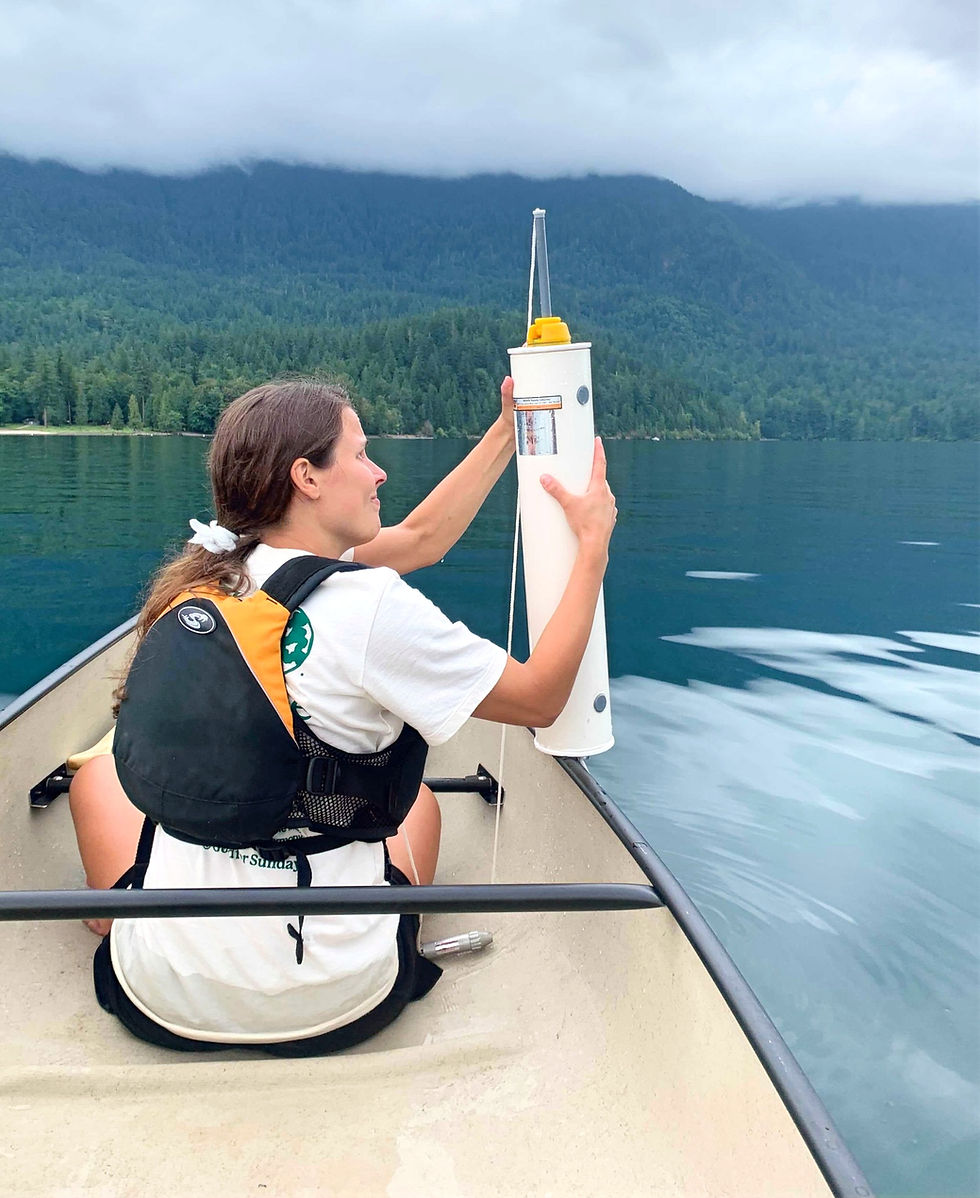Capturing Microplastics in British Columbia’s Freshwater Lakes to Detect Sources

Research on microplastic pollution in freshwater lakes in British Columbia has been overshadowed by a focus on marine environments. The amount of microplastics in British Columbia’s freshwater lakes and their characteristics, such as size, colour, shape and plastic type, is uncertain.
Natasha Klasios, aquatic ecologist and PhD Candidate at the University of British Columbia, supervised by Dr. Michelle Tseng in the Department of Zoology, is closing this research gap and has surveyed microplastic contamination across lakes in British Columbia.
British Columbia’s freshwater lakes are home to a wealth of animals and biodiversity. They are places of leisure, of work and sustenance. They provide ecosystem services and are key cultural places for Indigenous and non-Indigenous communities alike.
Natasha's research will establish a baseline of the amount of microplastic pollution in these lakes. It will also guide Natasha’s future lab experiments where she will study the effects of microplastics on organisms in these lakes.
“The data I’m collecting is relevant as these baseline surveys are the first step needed to understand the potential threat microplastic pollution poses to specific ecosystems, or in my case to specific lakes,” states Natasha.
“The data I’m collecting is relevant as these baseline surveys are the first step needed to understand the potential threat microplastic pollution poses to specific ecosystems, or in my case to specific lakes,” states Natasha.
Natasha sampled water and zooplankton from eight different lakes from Mainland/Southwest British Columbia and Vancouver Island. Many of these lakes are monitored yearly for water quality through the Lake Monitoring Program and, with Natasha's project, they hope to add microplastic data to the mix!
Natasha is currently analyzing the samples in the University of British Columbia lab to determine the amount and characteristics of microplastics in these samples.
Understanding the amount and types of microplastics in these lakes will allow researchers to assess the risk these ecosystems face from microplastics.
When eaten, microplastics can physically harm an organism by blocking the feeding tract of an organism, which can lead to starvation and can leach harmful chemicals and other pollutants, which may impact an organisms’ growth, reproduction and survival.
The condition of our lakes depends on the health of the organisms in these lakes. If tiny microplastics harm individual species, the effects could cascade through the entire ecosystem. It could affect us humans who rely on lakes for cultural, economic and recreational services.
“We don’t yet know the full impacts of microplastics yet, but I hope my research on lakes in British Columbia will begin to help us understand the risk microplastics pose to these ecosystems,” Natasha.
“We don’t yet know the full impacts of microplastics yet, but I hope my research on lakes in British Columbia will begin to help us understand the risk microplastics pose to these ecosystems,” says Natasha.
Natasha’s data can provide insight into which lakes are most contaminated with microplastics.
The information she collects will also show the types of microplastics and their abundance. Higher amounts of microplastics and certain characteristics of plastics can be more harmful than others. If a lake has a lot of microplastics in it, the chance of an animal ingesting them increases.
Natasha’s data will also inform the sources of these microplastics.
For example, lakes closer to cities may have more microplastics than lakes in remote areas. This information can help to inform solutions to prevent microplastics from entering lakes.
Natasha’s research is a key step to understand how microplastics move through and impact British Columbia’s freshwater lakes. We must understand what amount of microplastics there are in these lakes now, to understand the threat and inform mitigation strategies.
Check out her research in action below and follow Natasha (@natashaklasios) on Twitter for the latest updates.
